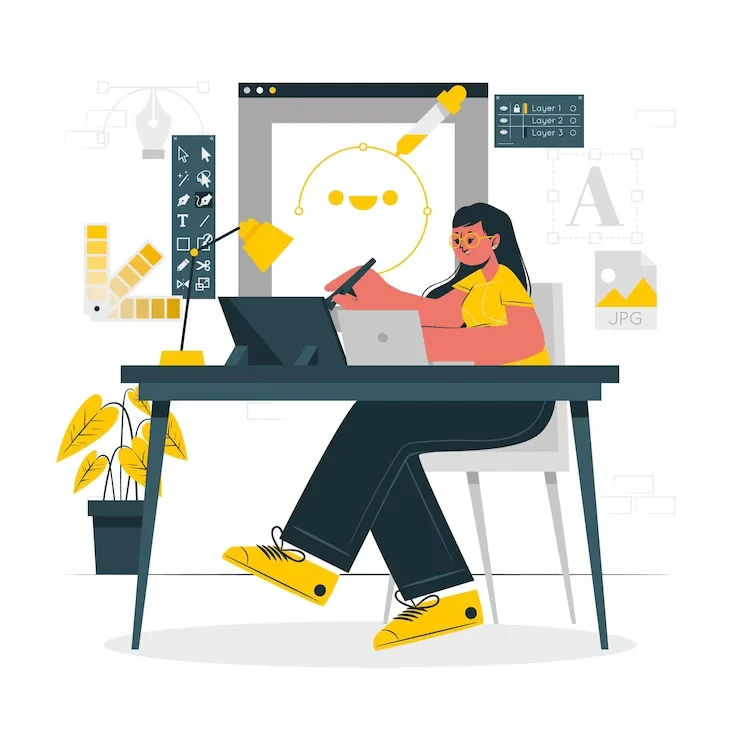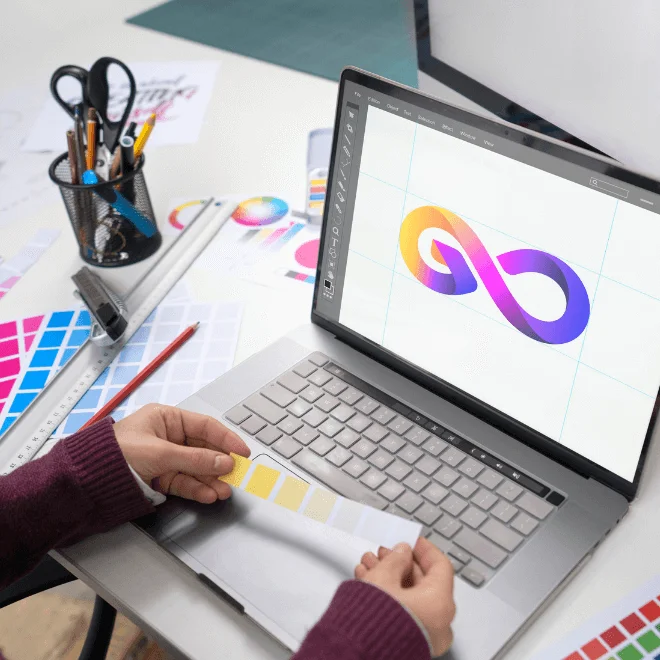Unveiling the Magic of Graphic Design: Where Creativity Meets Impact
The Art of Graphic Design
Graphic design is an art form that combines creativity, aesthetics, and communication. At its core, it’s about transforming ideas into visual messages that resonate with audiences. From choosing the right colors to creating captivating layouts, graphic designers are the artists who breathe life into brands and concepts. Through their craft, they turn blank canvases into powerful visual narratives that leave a lasting impression.
With the advent of digital tools, graphic design has expanded its reach beyond traditional print media. Designers now create digital content for websites, social media, and more. This evolution has brought about exciting opportunities for innovation, enabling designers to experiment with animations, interactive elements, and 3D graphics. The result? A dynamic and ever-evolving field that continues to push the boundaries of visual storytelling.
In conclusion, graphic design is an art that speaks to our visual sensibilities and emotions. It’s the creative force that breathes life into marketing materials, websites, and products. As we navigate the digital age, the role of graphic designers in shaping our digital experiences becomes increasingly vital.
The Impact of Visual Content
In a world flooded with information, the power of visual content cannot be overstated. Our brains are wired to process images faster than text, making visuals a key player in communication. Studies have shown that content with relevant images gets 94% more views than text-only content. From attention-grabbing social media posts to visually stunning websites, visual content is the linchpin of digital engagement.
Visual content extends far beyond aesthetics; it’s a strategic tool for conveying messages effectively. Graphic designers leverage visuals to create a strong brand identity, helping businesses stand out in crowded markets. Logos, color schemes, and typography choices are carefully crafted to evoke emotions and build trust with audiences.
In conclusion, visual content is the driving force behind successful online engagement. It captures attention, conveys messages, and leaves a memorable impact. As businesses and individuals seek to make their mark in the digital realm, harnessing the power of visual content is a must.The Role of Graphic Design in Branding
Branding is more than just a logo; it’s the personality and identity of a business. Graphic design plays a central role in shaping and communicating a brand’s essence. Through carefully chosen colors, fonts, and visual elements, graphic designers create a visual identity that resonates with target audiences.
Consistency is key in branding, and graphic designers ensure that every piece of visual content aligns with the brand’s values and mission. From the packaging of a product to the design of a website, every touchpoint is an opportunity to reinforce the brand’s identity.
In conclusion, graphic design is the bridge between a brand and its audience. It’s the visual language that conveys trust, reliability, and innovation. As businesses strive to build strong and recognizable brands, graphic design remains a cornerstone of their success.The Web Design Revolution
Web design is a critical aspect of the digital landscape. It’s not just about creating visually appealing websites; it’s about providing an exceptional user experience. Users today expect seamless navigation, fast-loading pages, and responsive designs. Web designers are tasked with balancing aesthetics and functionality to meet these demands.
The first impression of a website often determines whether users stay or leave. According to studies, 38% of people will stop engaging with a website if it has an unattractive layout. Web designers meticulously plan layouts, choose color schemes, and optimize images to ensure a positive user experience.
In conclusion, web design is a blend of aesthetics and usability that defines the online presence of businesses and individuals. It’s the digital storefront that welcomes visitors and keeps them engaged. As the digital landscape continues to evolve, the role of web designers in creating user-friendly and visually appealing websites becomes increasingly pivotal.The Magic of Infographics
Numbers and statistics can be daunting, but infographics are the wizards that transform them into captivating visual stories. Infographics are a powerful tool for simplifying complex data, making it more accessible to audiences. They are a prime example of how graphic design enhances content engagement.
The appeal of infographics lies in their ability to combine text, images, and graphics into a single, digestible format. This visual storytelling approach helps convey information quickly and memorably. Whether it’s explaining trends, presenting survey results, or breaking down processes, infographics make data more engaging.
In conclusion, infographics are the magic wands of graphic design, turning data into captivating narratives. They are a testament to the power of visuals in communication. As content creators seek to engage and educate their audiences, infographics remain a valuable asset in their arsenal.
The Creative Spark in Graphic Design
Creativity is the heartbeat of graphic design. It’s the force that drives designers to explore new concepts, experiment with visuals, and breathe life into ideas. From brainstorming sessions to sketching out concepts, graphic designers are constantly tapping into their creative well to deliver fresh and innovative designs.
Creativity isn’t just about aesthetics; it’s also about problem-solving. Graphic designers often find themselves pondering questions like, “How can we convey this message effectively?” and “What visuals will resonate with the target audience?” This creative problem-solving aspect ensures that designs not only look good but also serve their intended purpose.
In conclusion, creativity is the lifeblood of graphic design, infusing every project with uniqueness and ingenuity. It’s what sets designers apart and allows them to craft visuals that leave a lasting impact.The Evolution of Graphic Design
Graphic design is a field that has witnessed a remarkable evolution, driven by technological advancements. In the past, it primarily focused on print media, including brochures, posters, and magazines. However, the digital revolution has transformed the landscape, expanding design possibilities into the realm of websites, social media, and mobile apps.
The tools of the trade have also evolved significantly. Software like Adobe Creative Cloud empowers designers with a robust set of tools for digital design, illustration, and photo editing. These technological advancements have opened up new horizons for graphic designers, allowing them to create captivating digital experiences.
In conclusion, graphic design’s evolution showcases its adaptability and resilience in the face of technological changes. As the digital world continues to expand, graphic designers are at the forefront, shaping how we engage with visual content.The Business of Graphic Design
Graphic design is not just an art form; it’s a thriving industry. In the United States alone, the graphic design market size is estimated at around $15 billion. Businesses, both large and small, recognize the importance of visual branding and are willing to invest in quality design services.
Graphic design isn’t just about creating eye-catching graphics; it’s about delivering tangible results. An effective design can lead to increased brand recognition, higher engagement, and ultimately, more revenue for businesses.
In conclusion, graphic design is a valuable asset for businesses seeking to stand out in a competitive market. It’s an investment in building a strong brand presence and connecting with audiences on a visual and emotional level.The Future of Graphic Design
As technology continues to advance, the future of graphic design holds exciting possibilities. Virtual reality (VR) and augmented reality (AR) are emerging as frontiers that graphic designers are eager to explore. Imagine a world where users can interact with brands in a three-dimensional space or overlay digital information on the physical world – graphic designers will play a pivotal role in shaping these experiences.
Artificial intelligence (AI) is also making its mark in graphic design. AI-powered tools can automate repetitive design tasks, freeing up designers to focus on creative aspects. This synergy of AI and human creativity promises to revolutionize the field.
In conclusion, the future of graphic design is a realm of endless innovation and creativity. Graphic designers are poised to embrace new technologies and redefine how we interact with visual content.Graphic Design in Everyday Life
Graphic design isn’t confined to the world of advertising and marketing; it’s an integral part of our daily lives. Street signs guide us, product packaging entices us, and magazine covers catch our eye at the newsstand. Graphic designers are the unsung heroes behind these visual elements that shape our choices and experiences.
We encounter graphic design in everything from the apps we use on our smartphones to the way our favorite products are presented on store shelves. It’s the visual language that connects us to brands and influences our decisions.
In conclusion, graphic design is woven into the fabric of everyday life. It enhances our experiences, communicates messages, and influences our choices in subtle yet profound ways.